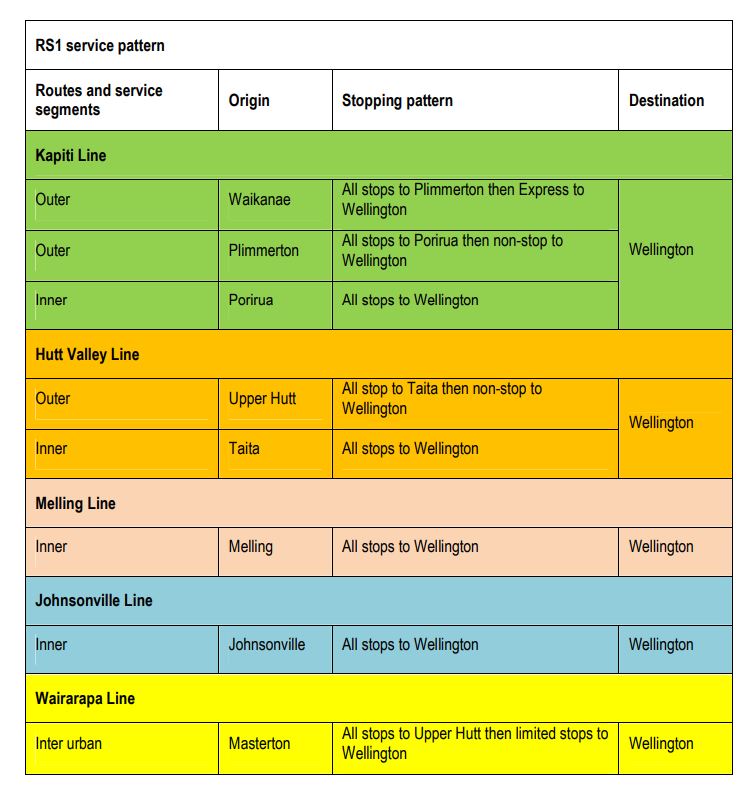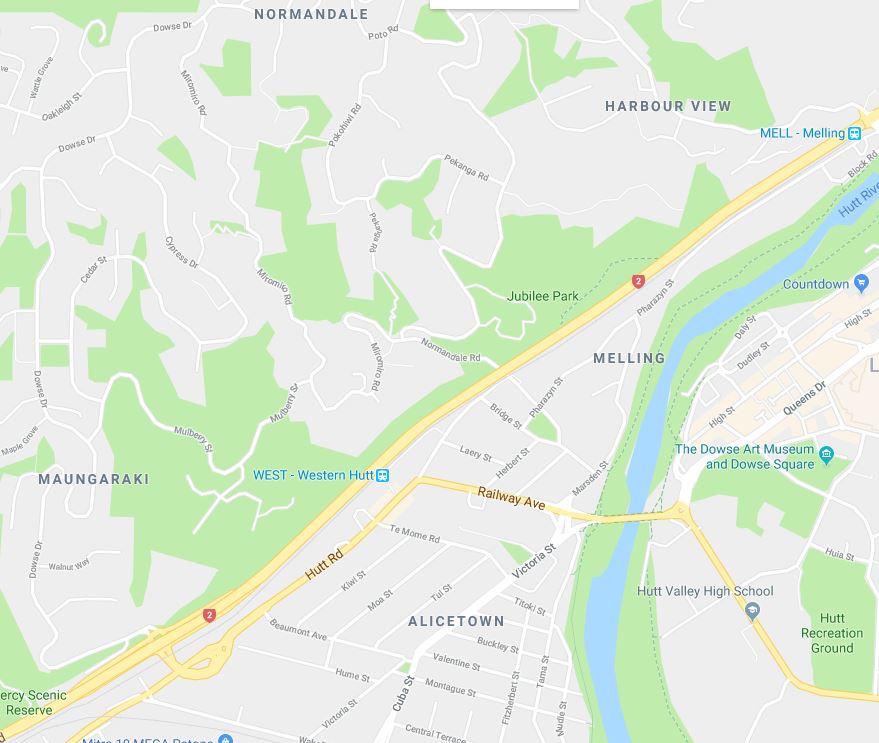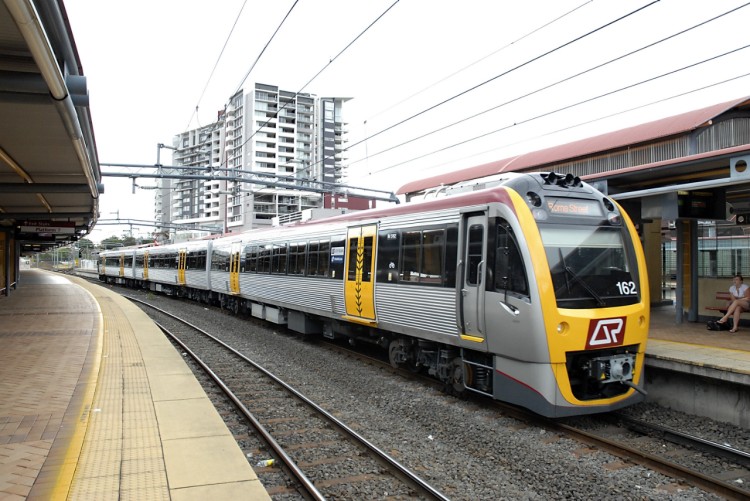Improving Wellington’s Rail Network – Part 3
There’s no better way to move lots of us around our region. While the lion’s share of investment’s been going to roads, Wellington’s rail network is finally getting a little love. Greater Auckland’s resident trainspotter Harriet Gale takes a look at our proposed improvements.
This was originally written for Greater Auckland – thanks for permission to repost.
This is part three of my series that looks at how we can improve Wellington’s rail network.
- In Part 1 I summarised the network and recent upgrades to it.
- In Part 2 I looked at some of the upgrades likely to be progressed in the near future and the need to improve the Wairarapa line.
In today’s post, we will look at a few more ways we can improve the Wellington rail network.
Improving Cycle/Walking Connections
This is a no-brainer, improving safe quality links to/from the stations increases the catchment of the network for very little money in the grand scheme of things. Safe and abundant bike parking at stations like in the Netherlands is a must, as is working with the private sector or rolling out an in-house bike share programme.
Moving from a Suburban Railway System to a Metro System
The Wellington Regional Rail Plan 2010-2035 shows a large amount of tension if the Wellington rail network is a suburban or a metro network, in the end settling for a compromise preferred pathway where the inner network is considered metro while the outer suburban.

Future Wellington Rail Network
This compromise results in a weird timetabled system that, for the sake of maybe a few minutes savings for the outer network, is:
- Not intuitive to passengers and creates unnecessary confusion;
- Doesn’t maximise train loadings all at the expense of reliability and the inner network;
- Reduces the frequency of the network both the inner and outer;
- Reduces the reliability of the network as more complicated movements means more room for error;

Future Confusing Wellington Service Pattern
All very confusing, luckily so far this is something we have managed to avoid in Auckland though the mention of investigating of more limited stops services has me concerned. The other difference Auckland plans to have in the future four tracks from Westfield – Papakura making expresses a much easier proposition.
From a network perspective, it would make more sense to procure new or decent second hand DMU’s fit for regional travel for the Capital Connection and Wairarapa Lines then truncate them on the outer part of the metro network. You could then run frequent shuttle services all day while freeing up space for a clockface frequent all stops metro network.
The time savings lost from losing an express service can be made up with an increase in frequency and reliability.
The Melling Line
The Melling line is very odd and I am not sure what it really is serving as there is not much walking catchment. If you only have a certain amount of free train capacity slots on the inner network it seems a little wasteful in my opinion. The solution here would be to build a turnback at Petone and instead of running an infrequent service to the city run a super frequent shuttle back and forward between Melling and Petone.

Extending the Hutt Line
It may also be worth investigating whether to extend the Hutt line extending electrification/double tracking by one or two stations adding stations at Maoribank and/or Clouston Park.
If the stations are feasible but the double tracking and electrification are not then they could become part of the Wairarapa line.
Removing Level Crossings
Looking at having a level crossing removal programme like Auckland could also be useful.
The Capital Connection
The Capital Connection is a once-daily return service running from Palmerston North – Wellington. Being only once a day makes it hard to rely on as if you miss it you are in trouble, also it means it can get very crowded.
A recent business case showed
The line would have a benefit-cost ratio of 9.4, meaning every dollar invested would create $9.40 in benefits.
It may also be worth investigating if the service should start at Feilding not far from Palmerston North where the station is right in the heart of the town rather than Palmerston North, adding a few more passing loops for increased frequency as well as completing the Otaki deviation fixing the windy alignment of that section. The latter two upgrades also benefit KiwiRail’s freight operations.
Like the Wairarapa line, the Capital Connection with increased frequency would create the opportunity to better connect with more frequent regional bus services from towns such as Foxton, which are not on the rail line but close to neighbouring towns as well the Capital Connection.
As mentioned before procuring some new or decent second hand DMU’s fit for regional travel alongside some network upgrades would be ideal for this route. The service could bounce back between Feilding and the outer metro network making the service much more reliable, amenable and useful.

If the Capital Connection became frequent enough the increased service could be an alternative to extending the electrification and metro network to Otaki which was estimated between $50m – $60m not including additional rolling stock.
Looking at Improved Signalling
At current Wellington operates on an older system to Auckland where we operate a system which is European Train Control System (ECTS) Level 1 compliant. There are a few advantages to having ETCS:
- Increased headways allowing a potential 24 trains per hour per direction;
- Full bi-directional signalling giving resilience and capacity at key points;
- Automatic train protection protecting trains from overspeed and signals passed at danger risk the latter which happened in 2016.
KiwiRail estimates installing ETCS Level 1 would be around $175 – 200 million. The real issue is why there are huge advantages to having automatic train protection, Wellington doesn’t have the same capacity constraints headway wise or junction wise that can’t be fixed really cheaply. For example, adding a fourth track in the Wellington station approach yards reducing conflicts, or clearer signals.
Bi-directional movement would be useful but its more a nice to have than needed. There are also other ways to address some of the safety concerns but this should be thought about for the medium-long term.
So a few ideas to improve the Wellington rail network. What do you think?
I’m not a fan of the multiple segments the inner / outer plan gives us.
An example of my daily commute is Home -> Upper Hutt -> Waterloo. On average this is about 34 minutes. On a bad day, the WRL express service isn’t running, so an extra ten minutes waiting *for* the HVL to Waterloo and then a longer journey (23 minutes vs 11 minutes). The WRL service has no stops between Upper Hutt and Waterloo so is ideal, whereas the ‘outer’ pickup on the HVL means it stops every station to Taita, slowing the journey.
On the return, often I’ll carpool from Wellington CBD to Petone, so the ‘outer’ HVL express zips past and there’s no easy ticket option for the minimum 8 zone / $10.50 fare on the WRL for Hutt Valley stops (it’s only 4 zones / $4.50 all the way ‘normally’)
I usually grab the HVL Taita service Petone -> Waterloo and swap to the HVL Upper Hutt Express at Waterloo -> Upper Hutt. Often this HVL express (Wlg -> Wateloo all stops form Taita) is stuck behind the Taita train I just disembarked from and despite having no stops, will slowly progress to Taita before beginning its “all stops”.
Is it worth paying double the 4 zones fare to get home quicker? Not really, if I’ve got a Netflix offline episode or two.
So I don’t see any real improvement.
Essentially this plan turns my commute into the same both ways – on two slow services Upper Hutt -> Taita -> Waterloo. And on the return slow services again Petone -> Waterloo / Taita -> Upper Hutt
It’s too hard to get to the trains. The park and rides are overflowing all up the Kapiti linr but I’m not going to bike (or scoot or walk) because it’s too scary easpecially past the school lots of parents logjamming the drop off. Bike parking is all very well but it won’t get me biking until the roads are safer or there’s a no-traffic route
The suggestions on the Capital Connection are good ones and regarding the extension to Feilding, one I had not heard before. It would be interesting to see how many would use just a Feilding-PN journey, for day trips.
Ultimately though, frequency is the issue. If this ran just twice a day in each direction it could really open things up.
A constant (and advertised) feeder bus between the PN station and the Square would also be welcome (if not already). Its such a shame it does not still run through the middle of the city as originally built.
why did they stop that bus? When? sounds like a great service
I meant that if there isn’t already one, there should be. I assume there is but then the train only departs and arrives once a day. So its probably limited.
A more regular service would, I am sure, mean a more regular feeder bus.
The Capital Connection appeared to get into difficulties when the electrified suburban service was extended to Waikanae and took away a chunk of the Capital’s patronage. When the Capital became threatened with closure and KiwiRail was casting around for ideas to try and boost its patronage, I tried to suggest that the 8-car train be split into two and run as two half-consists, giving a choice of departure times rather than the single ‘take-it-or-leave-it’ offering. A choice of timings is in part what helps the Wairarapa service popular.
Back then, lower-powered DC-class locomotives were available for passenger use and it seemed feasible that each capital-Connection half-train could have been hauled by a DC, rather than tying-up the more-powerful (and more-in-demand) DF, necessary for hauling the full 8 cars. A second generator van would have been needed but two of these should have been available from the former Overlander fleet. The only other additional requirement would have been another crew.
Unfortunately this idea was not pursued. The passenger manager at the time showed not a flicker of interest that I could see. Meanwhile the Capital Connection was given a stay-of-execution, but as far as I know nothing else has been done since this time to improve on its usability or its customer-appeal.
I am not sure how its patronage is holding up now, but had our new government not come along with its enthusiasm for regional rail, the existence of a Palmerston Nth – Wellington rail service could well be under threat again.
But for the bold aspirations of our new government to kick-start a more-comprehensive regional rail network, the threat to the Capital could likely return